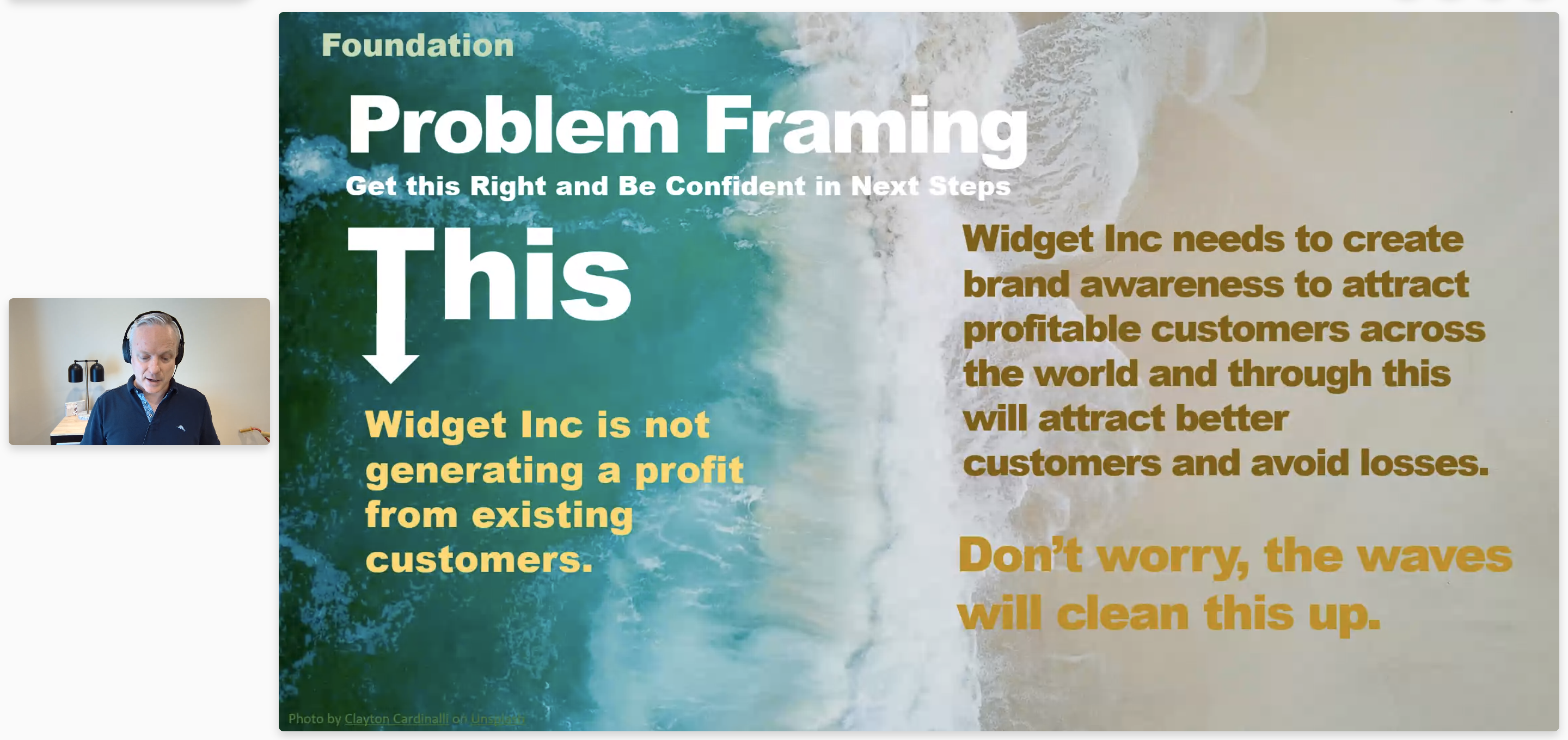“Every problem needs a story, and that story needs to lead to provide that critical context”
Dana Marr joined July’s uxWaterloo to chat about how important it is to have a strong problem statement before trying to create a solution, especially for those of us working in user experience. Marr shared his experience and past challenges when talking to leadership about what he and his team are working on. He has found that jumping straight into how the technology is going to work usually does not give enough context and, despite what we often hear, will not just “speak for itself”.
When a team presents a solution without a shared understanding of the problem that they are solving, they can get stumped when simply asked “why?”. “If you can’t answer why you’re doing something, you may have strayed from the original intent of that problem statement,” says Marr. He went on to explain that you might not have even understood the problem that needed to be solved in the first place. Every project in an organization ladders up to some sort of greater strategy, and it is very important for a team to understand that strategy in detail before even starting to come up with solutions.
When it comes to UX research and design, everything starts with people and trying to solve problems that people truly care about. Marr shared that even before user experience designer was really a job title, he was applying UX. “I was always caring about people and trying to solve problems for people”
So, how can a designer figure out what the right problem is to solve? Marr likes to use a “5W, 2H” framework. He asks people what problem they are facing, why it’s a problem, who does it affect, where is it taking place, and when does it occur. He then follows up by asking how the problem relates to their organizational strategy, and if the person has any ideas about how to solve the problem.
This framework can be used to source problems from across an organization, or to better understand the problems that clients and users are facing. In both cases, it’s important to actually listen to the answers, and use those answers to find the root cause of the problem. Figuring out the root cause is not an easy task, but it is important to invest time here because that root cause will be what you will actually be working towards trying to solve.
Once you have gotten to the root cause of the problem, you might be ready to start coming up with solutions. However, Marr has found that the next big challenge he often faces is presenting this progress to leadership. Marr warned us about having “the wrong conversation with the wrong people at the wrong time”. He has found that presenting a proposed problem that is too big, too early, often results in leadership becoming impatient to see progress. Instead, Marr recommends prioritizing the problems that you are planning to take on in terms of readiness and fit. What problems are ready to be tackled right now, and are they a good fit for your team?
You should look for problems that will have a high impact on users and the organization, with low effort to implement. These are the items to complete first. You might even try taking on one of these smaller tasks before talking to leadership so that you can test and demonstrate the tooling and the processes that you plan to use.
People are generally risk averse, but by combining measurable, prioritized tasks with a story that is backed in research and clearly describes the main problem and root cause, you will develop a shared understanding across the team and leadership. Through this work, the question of “why?” becomes an interesting research question for the team to explore together, and soon they can begin to focus on the “how?”.





